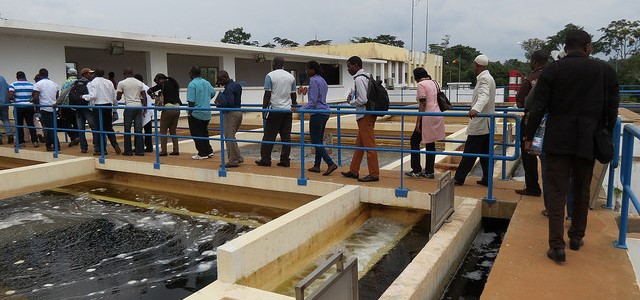Characteristics
Recycling and reuse is a strategy to improve water supply by managing waste water better. It has a wide applicability in general, but particular techniques or levels depend on local priorities and possibilities, and economic feasibility. It is most appropriate in areas where there are extreme water shortages, high water costs, and high technical capabilities. Consequently, urban settings are ideal for recycling and reuse (see C4.05). Generally, high levels of technical management, monitoring, and regulatory skills are needed for recycling and reuse to be both safe and effective. However, wastewater is widely used for irrigation as it supplies added nutrients, and this can be done safely and simply following World Health Organisation (WHO) wastewater reuse guidelines, and also depending on the crops being grown and the type of wastewater used. As well, some less sophisticated techniques for grey water reuse are being developed, such as guideline ratios for safe mixing of waste water and fresh water, which can make this tool suitable for less developed areas.
Recycling and reuse is a useful management tool at the river basin level. Urban effluent can be treated and returned to aquifers or rivers for dilution by natural flows and re-abstraction downstream. In this process, it is important to carefully monitor the quality of returning effluent in order to ensure that it will not pose ecological or health risks to downstream users. Treated effluent from industrial or municipal treatment plants may be piped directly for use in agriculture and horticulture (although the level of treatment should be adequate to minimise health risks, and recycled sewage only used for crops with low uptake of water/pathogens). When making use of recycling, water returned to rivers or used for ground water recharge must be controlled in both quality and quantity by discharge permits, which take into account the needs of the aquatic environment and water available for dilution.
Recycling and reuse is feasible for individual water users in industry, institutions and large buildings, and even at the household level, to make the most of available water through recycling treatment processes. For instance, in water-short urban areas, water from rooftops or paved surfaces can be used for toilet flushing, sometimes with additional grey wastewater.
Recycling/reuse approaches can be promoted through policy instruments such as charges and tariffs, which increases the cost effectiveness of recycling and reuse (see C7.01). Regulations and by-laws (A2) and other incentive schemes can also stimulate change towards better recycling and reuse practices. Such incentive schemes include Raising Awareness (C8.02) or other information and communication Tools (C8; C5).
Lessons learned
- Industrial water users can make major savings by modifying manufacturing processes to recycle cooling water.
- Recycling and reuse are not always cost effective. Policy interventions should look at the economic implications of changing use patterns.
- Reuse within a river basin is universal, but planned reuse is better than the normal unplanned approach as regulation and monitoring is needed to avoid a build-up of persistent or toxic chemicals in the system.
- Irrigation return water and urban and industrial effluent should be monitored in particular for toxic chemicals, heavy metals, pesticides, and fertilisers.
- Consider the “yuck” factor. Water recycled for potable use should be treated to the highest bacteriological and chemical standards, but it still may not be aesthetically or conceptually acceptable to some users.
- New programmes for recycling and reuse should be accompanied by training and awareness raising programmes (see B4; C8).
- Water recycling at the household level may impose extra burdens on women if the system is to be maintained properly.

